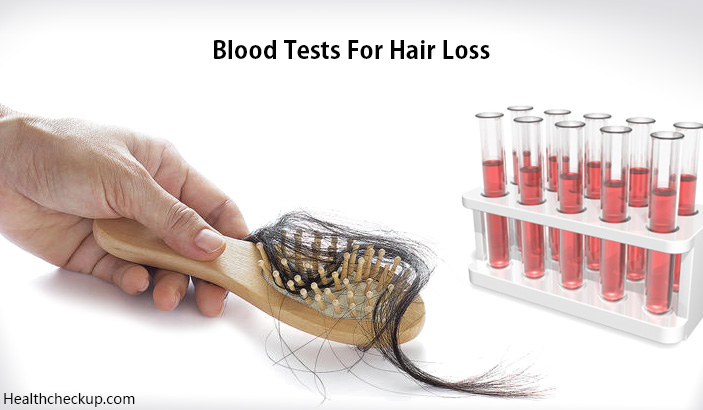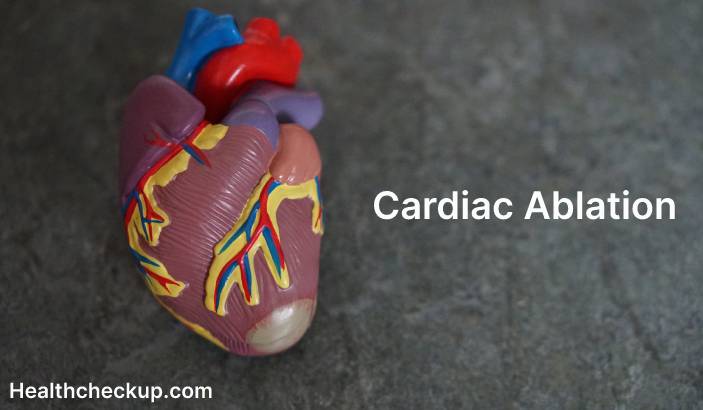Hair is one of the most characteristic features of a person. It helps to define an identity of each person. Hair Loss or Alopecia is a commonly seen complaint in medical practice, for both men and women. Hair loss can be temporary and treatable to permanent and irreversible.
Losing 50-100 strands of hair in a day is considered normal because new hair growth occurs simultaneously and the chances of going bald are remote.
If the hair growth-loss cycle is disrupted, alopecia or hair loss is seen. However, patients often get worried and seek treatment at the earliest since it is distressing and can cause significant embarrassment. This article will help you understand the causes and types of hair loss, whether hair loss can be reversed and if there are any blood tests for hair loss.
Types of Hair Loss
| Non Cicatrical
It causes temporary hair loss. In chronic case,s there is scarring and permanent hair loss. |
1. Telogen Effluvium – It is also called Shedding.
2. Androgenic Alopecia – It affect genetically predisposed people of both genders at any age.
3. Alopecia Areata – This pattern causes patchy hair loss.
4. Traction Alopecia
5. Trichotillomania
|
| Cicatricial
It causes irreversible hair loss. |
|
| Hair Shaft Abnormalities |
|
Blood Tests for Hair Loss
With the list of hair loss types mentioned above, it is quite evident that hair loss could be more than just cosmetic losing of hair. Hair loss can also indicate an underlying metabolic, hormonal or an auto-immune disorder which needs to be investigated.
Possibility of infectious diseases like syphilis and nutritional deficiencies must be ruled out. Hormonal screening needs to be done to detectan excess of androgens and peri-menopausal changes. Blood tests for hair loss are advised based upon the individual demand of each case. Some tests that may be advised to investigate causes for excessive hair loss are
- A basic complete blood count with ESR.
- Blood sugar levels to rule out diabetes as a cause for hair loss.
- Thyroid function test to rule out the role of thyroid disorders in causing hair loss.
- Serum ferritin levels to rule out iron deficiency and anemia as a cause.
- Testosterone levels in both males and females.
- Anti Nuclear Antibodies (ANA) to rule out the auto-immune cause for hair loss.
- Lipid profile may need to be investigated in young males having male pattern baldness.
- Women with excessive hair loss may be advised blood test for hormones like estrogen, LH, FSH, prolactin, androstenedione and sex hormone binding globulin.
Other Tests for Hair Loss
Scalp Biopsy – This is rarely advised by doctors or dermatologists. It is done to examine the inside of your hair follicles. In scalp biopsy, your doctor will take a small piece of your scalp and examine it under a microscope.
Densitometry – It is a method by which a handheld magnification device is used to evaluate shrinking of hair follicles.
Hair Pull Test – In this test, your doctor slightly pulls a small amount of hair (roughly 100 strands) to understand if there is excessive hair loss. Falling out of 1-3 hairs per pull considered normal.
60 Second Hair Loss Count Kit – This kit measures the rate at which hair is shedding. It can be used to monitor progress while undergoing ay treatment for hair loss.
The kit allows you to collect and count the number of hairs shed and also provides a standardized method to calculate the exact amount of hair loss. This test for hair loss can be done at home. The 60 second hair loss count kit has the following contents
- 60 second hair loss count shampoo
- Special kit comb
- Landing mat
- Tracking and monitoring card
- Instructions manual
Hair Loss Due to Stress – Will It Grow Back?
We know that any kind of stress – physical and more importantly, mental and emotional stress can have a negative influence upon the functioning of the whole body
Physical Stress
- Excessive pulling, tight braids and regular use of rollers and straightening iron causes physical stress on the hair which result in breakage and hair loss.
- Hair loss due to physical stress can be reversed by following few hair-care methods mentioned below.
- Hair can grow back if appropriate measures are taken and further physical stress on hair is reduced or avoided.
Anxiety and Depression
- Tricotillomania is a type of hair loss which is linked with anxiety and depression.
- Hair loss due to trichotillomania can be stopped and the hair grows back only if the condition can be identified early.
- Patients generally do not admit to this compulsive pulling of hair.
- However, pulling out a large amount of hair can cause permanent damage to hair follicles and then it is not possible for the hair to grow back.
Mental Stress
- This can be considered as a primary factor for hair loss as it affects the sleep and dietary pattern and increases the release of stress hormones.
- Hair loss due to mental stress is seen more commonly among males than in females.
- Hair loss in return can increase stress in these patients.
- There have been several research papers which suggest a negative impact of stress on hair growth.
- Psychotherapy, pharmacotherapy and use of home remedies can help hair to grow back.
Tips To Prevent Hair Loss
Hair loss is best managed by patient education and reassurance that hair is being replaced continuously and there is a remote chance that you might become bald. Some self care tips which will help you manage and avoid further hair loss and hair damage are
- Avoid washing hair too frequently.
- Avoid washing hair with hot water. Washing hair with hit water strips away the hair of its natural proteins making them brittle and increasingly prone towards hair breakage and hair loss.
- If your hair has a tendency to get tangled, apply a small amount of oil to detangle without causing breakage.
- Avoid brushing your hair vigorously. If your hair is tangled, start brushing from the ends and go upwards.
- Make sure to oil your scalp and hair at least twice a week. Use vitamin E oil along with your regular hair oil.
- During travelling, cover your hair with a cap or scarf to avoid exposure to pollution and dust.
- Avoid combing your hair when it is wet. Your hair is the weakest after washing.
- Tight braids, ponytails, hair bands and rollers cause pulling of hair. These are responsible for traction alopecia.
- There have been studies to prove that onion juice and crushed curry leaves with oil applied on scalp separately promote hair growth.
Dr. Himanshi is a Homoeopathic consultant and currently working as a lecturer in Post-graduate faculty of Homeopathy, Parul University, Vadodara. Completed BHMS and MD in Homeopathy in January 2018 and also has a clinical experience of about 6 years. Personal interests include reading, spending time with family and traveling.








